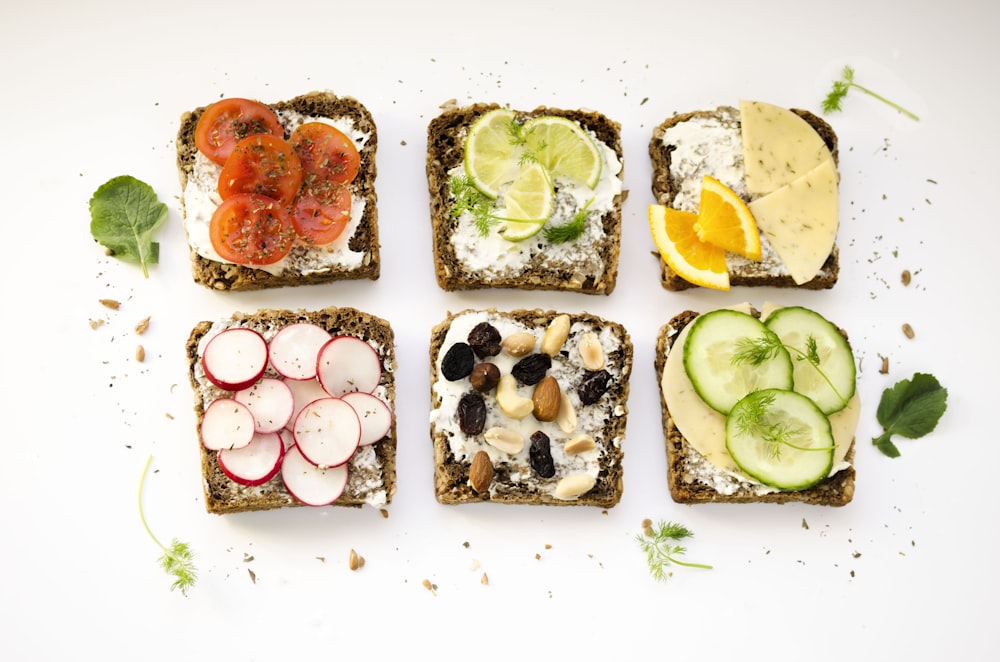
Even if your kids are picky eaters, mealtime drama doesn’t have to be a thing. Figuring out how to get your kids to eat healthy can help family mealtimes be less of a battlefield.
Perhaps it seems like your kids are always turning their nose up to the baked salmon and salad you’ve just made. They whine and negotiate for mac and cheese or chicken nuggets. You can’t help but feel frustrated because you understand that nutrition is a critical factor in their growth and development. You want to figure out how to get your kids to eat healthy for their sake, and that’s understandable.
Growing kids need vitamins and nutrients from vegetables, fruits, and lean protein. Laying a strong foundation in their early years is the precursor of creating good habits that will be long-lasting and benefit them into adulthood. Furthermore, studies show that getting your kids to eat healthy helps them maintain a healthy body weight, avoid weight-related and nutrition-related health conditions, and eating healthy can even improve their mental health.
Want to master how to get your kids to eat healthy? You’re not alone, because many parents struggle in getting their kids to eat their greens and eat less fried foods. How do you reconcile giving into what their taste buds want versus providing them with more nutritious choices? The good news is that you can make nutritious and delicious food that kids will enjoy. There are even ways to make spinach taste delicious. You simply need a few tricks up your sleeve to get kids to eat right and de-escalate mealtime drama. We’ve compiled a list of tips to encourage your children to eat healthy food, making mealtimes go on a little smoother.
How to Get Your Kids to Eat Healthy: Lead by Example
Your children are influenced by what they see, so if you want to master how to get your kids to eat healthy, what you eat in front of them certainly matters. If you want your kids to make smarter food choices, model good eating habits and provide them with educational materials that encourage these habits.
Studies show that a parent’s attitude and habits towards food could result in a healthy relationship with food or disordered eating in your children. So keep a watchful eye on how you behave during dinner time. Try the following tips that can help develop healthy eating habits:
- Provide a variety of new and healthy foods consistently
- Give words of praise when your kids choose healthy items
- Make it a family affair, including extended family who visits

Provide Different Choices
As an adult, you don’t want to be forced into anything, even food. The same applies to your toddlers and older kids who are developing their personalities and learning to forge their independence. Although giving them a choice between apples with yogurt or carrot sticks with cottage cheese may not seem much to adults, the fact that you are giving them a choice fulfills that feeling of autonomy kids desire. At the same time, providing healthy choices gives you a bit of control over their nutrition.
Moreover, it would help to offer a variety of choices. The key to having an adventurous palate is to start them young. Research shows that food preferences or what they like and dislike begin in fetal development and are enforced when babies begin solid foods. Thus, it would help to serve a wide array of foods. Although it’s a big no to dictate that your child must eat everything, offering a few bites to try will help.
When they’re old enough, you can encourage them to make their own plates to exercise their independence while following guidelines to include a serving of protein, carbs, fruits, veggies, and dairy. By giving them the freedom to choose what to put on their plate, they can exercise a choice while still receiving the nutritional components needed for their development.
Re-Evaluate the Clean Plate Rule
Most parents grew up with the mandate to clean their plates. But as adults, you realize that you stop eating when you feel full. The same rule should apply to your children. Let your kids stop eating when their stomach tells them they’ve had enough. Grant your kids the same privilege and allow them to listen to their bodies. When they are allowed to acknowledge feelings of fullness, they are less likely to overeat or overindulge. This will prevent them from gaining too much weight.
As noted earlier, having a choice is a primary element in teaching your kids to imbibe a healthy diet, so it is important to permit them to stop when they have eaten enough and express fullness. Moreover, forcing or yelling at the kids will not help. Instead, it will make mealtime miserable for everyone. Once kids become upset and start crying, they are likely to dread future meals. Avoid this negative food association. Though you can encourage them to eat, don’t apply excessive pressure. And always remember, it is unlikely that your kids will love every food you offer. Your tiny humans will also have their preferences and favorites just like you.
Bring Them to a Farm or Farmers Market
Children are naturally curious so bringing them to an actual farm or farmers market will pique their interest. They are more likely to give nutritious food a try if they’re exposed to it and see where the food comes from. These two places don’t have the temptation of junk food, unlike the supermarket. Instead, kids can see various livestock, dairy, grains, veggies, and fruits.
On an actual farm, they can even pick the produce from the actual plant. If there’s no farm or farmers market near you, you can show various videos and pictures to illustrate the behind-the-scenes that get the food from your farm to the table. When kids understand how things work, they are more receptive to giving them a try.

Include Kids in Meal Planning
Part of learning how to get your kids to eat healthy is understanding the importance of sometimes including them in meal planning decisions. Your kids will be more excited to try new dishes if they come up with the idea. Encourage your little foodie to join meal planning and preparation. Make it a family affair so that everyone gets a say on what they will eat throughout the week. Getting your kids involved gives them a voice, makes them feel heard, and provides the assurance that their opinions matter.
To avoid having burgers or chicken nuggets for every meal, give your kids a guideline. For instance, make them suggest one serving of protein, one whole grain, and at least two types of veggies or fruits.
Cook with the Kids
Although it may take you longer to get the meal ready, cooking with your kids really helps in encouraging them to try new dishes. Children are more likely to taste food that they had a hand in making. Just make sure you steer them into doing safe activities such as:
- Measuring different ingredients
- Mixing ingredients in a bowl
- Washing vegetables
- Tossing a salad
- Cracking an egg
Save the heat and cutting-related activities for when they are older. As they perform simple kitchen duties, they can see how entire meals come together and appreciate the process. Furthermore, this activity helps you bond with your children, filling their memory banks. As they grow older, they have a primer on how to prepare their own healthy meals. Though cooking with kids means you work slower in the kitchen and opt for simpler recipes, the payoff is super worth it.
Anchor New Meals on Their Favorite Foods
Children are typically suspicious and reluctant to try new, healthy foods. The solution for this is combining new stuff with options that your kids already like. Bear in mind, children learn during their formative years. Experts say that kids, when, and how much to eat based on what goes on in your family’s habits. During this period as they develop their taste buds and habits, you must introduce different grains, veggies, fruits, and proteins. Doing this early will prevent them from being picky eaters later in life.
If your kids are reluctant to try something new, pair it with gateway foods that they enjoy. For example, if you want them to try celery sticks, you can pair it with a ranch dip that they love. Similarly, if they turn their nose up to spinach, you can try mixing it in a cheese omelet.

Work on Presentation
Many foodies say that the meal actually begins with proper plating because you also eat with your eyes and not just your mouth. When a dish doesn’t look visually enticing, who would be encouraged to try and eat it? Hence, presentation matters more than you think.
In restaurants, they garnish plates because the way a dish is presented makes it more palatable to customers. The same applies to children so you have to make nutritious food look appealing so they will be willing to try it. Here are some tips:
- Cut up fruits into different shapes like flowers and hearts using bento cutters
- Shape bread or rice into fun characters, taking inspiration from this page
- Use fun, decorative food picks for finger foods
- Utilize character utensils and plates to entice kids to eat
Offer Smarter Snacks
As the parent, you control the supply line since you do the grocery shopping. You wield the power to decide what snacks to buy for the pantry and serve the kids. Instead of stocking your cupboard and fridge with processed foods like chips and cookies, keep plenty of healthier choices available. Instead, opt for these smarter treats:
- Yogurt in various flavors
- Air-popped popcorn
- Different flavors of rice crackers
- Trail mixes
- Cut up fruits
- Oatmeal
- Healthy nuts
When kids are hungry in-between meals, they usually will reach for what’s available. However, this doesn’t mean completely banning their not-so-nutritious favourite snack. Setting guidelines when they can eat it, such as once or twice a week, will help so they don’t feel deprived. Of course, you also don’t want to spoil their appetite for the main meals with excessive snacking, so you must teach the kids about portion control.
Make Meals About More Than Just the Food
Finally, mealtimes shouldn’t just be about food. A nutritious meal is a way to bring your family together. From rambunctious toddlers to moody adolescents, everyone enjoys and loves to eat a home-cooked meal surrounded by loved ones. The knowledge that the family will approximately sit down to eat at the same time every day can be very comforting for children who crave attention and a sense of belongingness. Sharing a good meal together can even enhance their appetites.
Therefore, it is not a good idea to have drama over food. It will only upset everyone’s stomach and ruin appetites. Gathering your family around a table is an excellent time to catch up on your kids’ daily lives. This seemingly simple act of talking during dinner plays a big role in getting to know your children, relieving their anxiety, and boosting their mood. Don’t ruin that chance because of disagreements over the menu. Having strained mealtimes can potentially force your kids to adopt negative associations with food.
And as you eat, bear in mind that kids will follow what you do. Be a role model and eat healthy yourself, following good habits like chewing slowly, savoring the food, and drinking water. If you truly want to figure out what’s best for your family, consider taking a CircleDNA test. This at-home DNA testing kit will not only provide reports on everyone’s ancestry and personality traits, but it also provides nutrition reports based on your DNA including information on everyone’s optimal diet based on their genetic needs.






